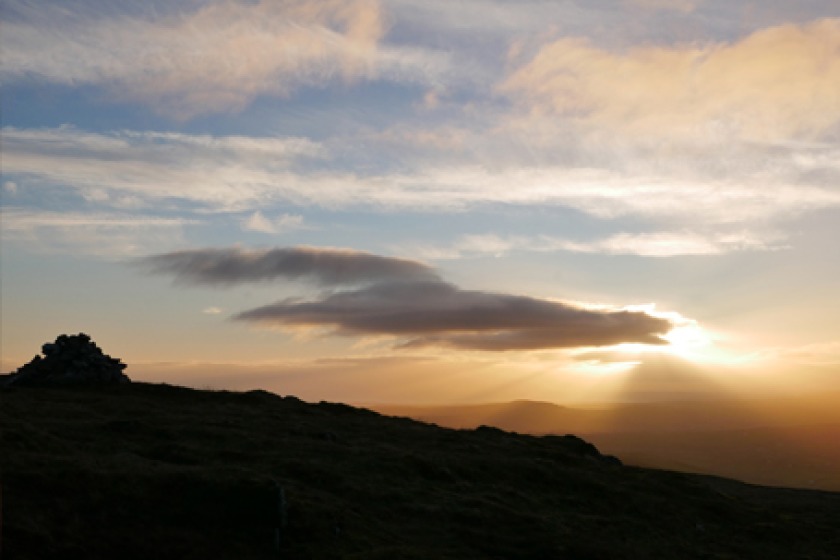Indecency in the hills
Tue, 23 Jul 2019
In the seventh in our series of articles about Manx folklore and calendar customs, this piece looks at the customs for the start of August, once described as one where people "behave themselves very rudely and indecently for the greater part of the day"! This was recently published in the Manx Independent:
Marking the Passing of the Year
There are many traditions, stories and customs in the Isle of Man, some of which are still enacted and recognised today, and some of which have vanished into the mists of time.
The start of August is approaching - beware of rude and indecent behaviour in the hills.
Many traditions for the Manx year are shrouded in uncertainty, but perhaps Laa Luanys especially.
When is it? Where does it come from? What are you supposed to do?
The answer to the last of these is hinted at by the curate of Lonan who bemoaned people going up the Snaefell in 1732 where ’many young people (and some of riper age) behave themselves very rudely and indecently for the greater part of the day’.
Sadly, the account gives no further details their exploits.
This rather clashes with one early attempt to explain the event as honouring the Biblical tale of Jephthah’s daughter, who ’bewailed her virginity upon the mountains’.
Perhaps issues of procreation were at stake on the Manx hills, but not as Jephthah might have wished it!
Regardless, the tide of respectability led by the Church washed away much of these older practices amongst these hill-top gatherings.
One wise evangelist at the centre of this was known as Patrick Beg.
He used to seek out the gatherings on the hills and give them impromptu (and uninvited) sermons before going round with the collection box - a highly effective way of discouraging the ’superstitious and wicked custom’.
Of course, part of the problem of Laa Luanys for the authorities was that it was a pre-Christian tradition, relating to the Celtic god, Lug.
He appears as ’Lugh of the Long Arm’ in ’Manx Fairy Tales,’ where we learn that he stayed with Manannan on South Barrule until he was ’glorious in his youth and strength,’ when he returned to Ireland to defend his people.
The transition from a pre-Christian to a Christianised practice in modern times explains how the date shifted from August 1 to a Sunday at the start of August.
It is also partly explains why this is a good day for visiting one of the many holy wells for a miraculous cure for your ailments.
St. Maughold’s Well on Maughold Head is just one recommended for this day.
It also explains how music is a new tradition for the day. When Mona Douglas organised a trip up South Barrule in 1919, she invited the famous cellist of Grenaby, Tom Taggart, to lead them in hymns.
But perhaps just being in the hills is enough.
At Midsummer’s evening I took a walk on Peel Hill and found groups of young people looking rather embarrassed to be found out vaguely waiting for the sunset.
On an impulse to mark the changing seasons, but without anything specific to be doing, I couldn’t help think of Laa Luanys.
Traditions change and shift, but marking the changing Manx year is always a good thing.
The article is available to be enjoyed on the Isle of Man Newspapers' website.
More about the folklore and customs of the Isle of Man can be found amongst our Manx Year pages: Laa Luanys.
Recent News
-
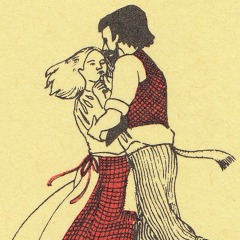
Rinkaghyn Vannin: Manx dance book and cassette released online
Thu, 18 Apr 2024
-

Travel Insighter article on the Isle of Man
Wed, 17 Apr 2024
-

Vin Diesel to star in film version of the Buggane of St Trinian's
Mon, 01 Apr 2024
-
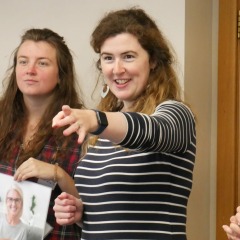
Manx Gaelic Summer School
Tue, 12 Mar 2024
-

March Manx music and dance newsletter
Fri, 01 Mar 2024
-

Adrian Corkill awarded the RBV for his work on Manx shipwrecks
Fri, 23 Feb 2024
-

February Manx music and dance newsletter
Thu, 01 Feb 2024
-

Folklore Guide event
Tue, 09 Jan 2024
-
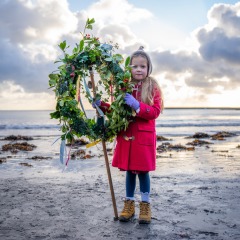
Beautiful pictures of an ancient Manx tradition
Wed, 20 Dec 2023
-
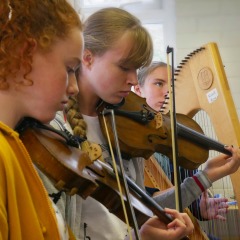
Youth Manx trad session announced
Tue, 19 Dec 2023

